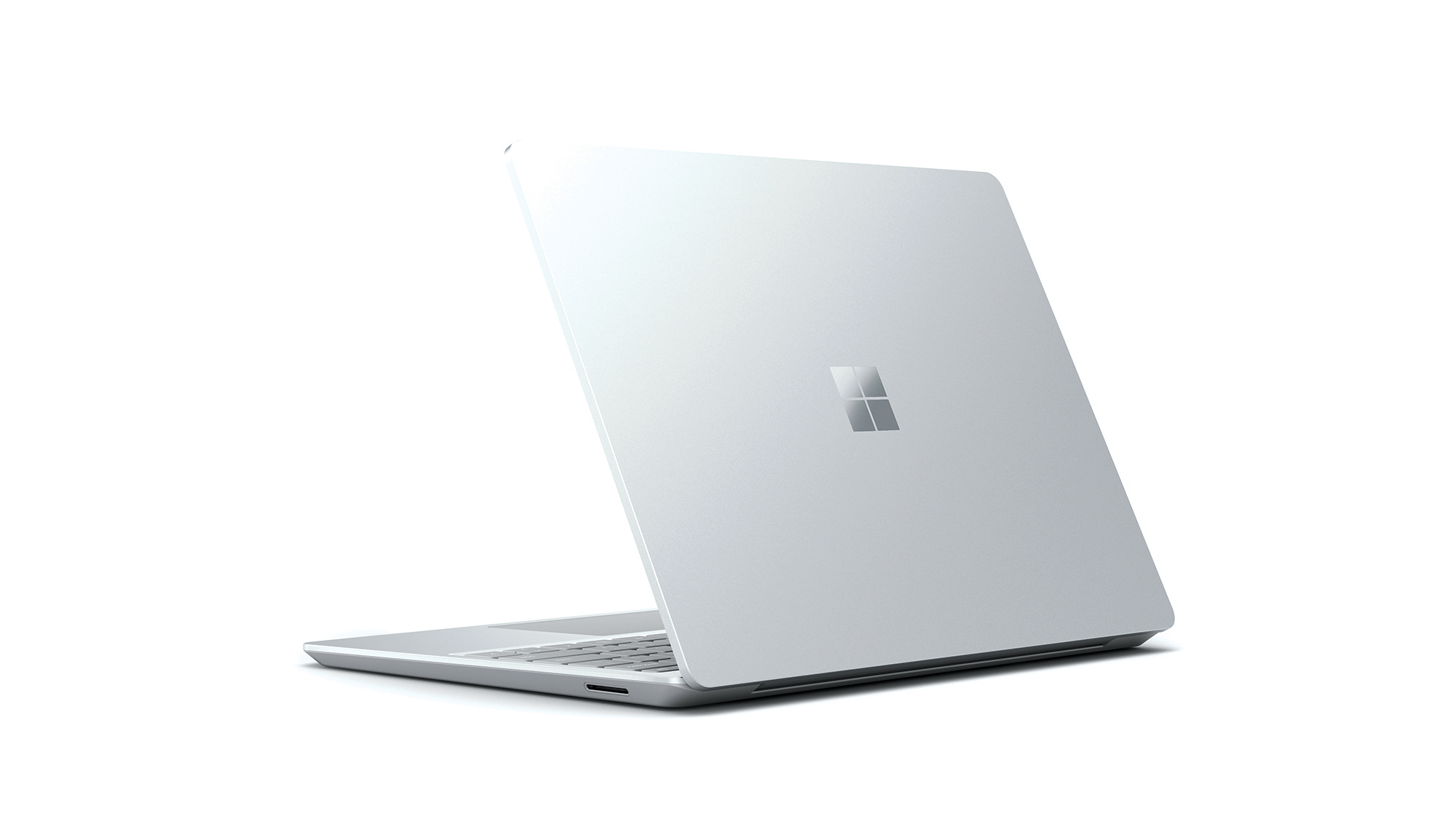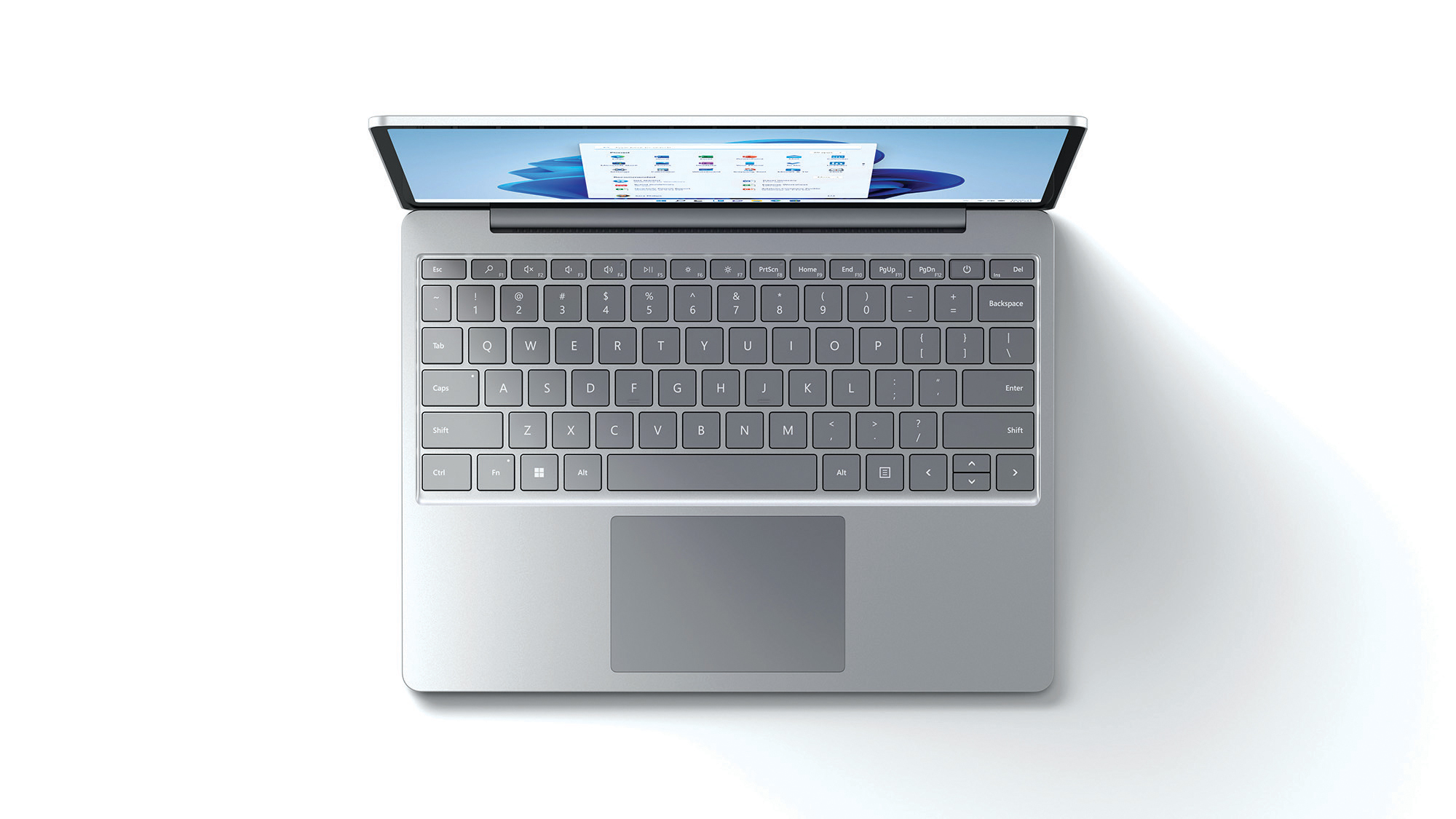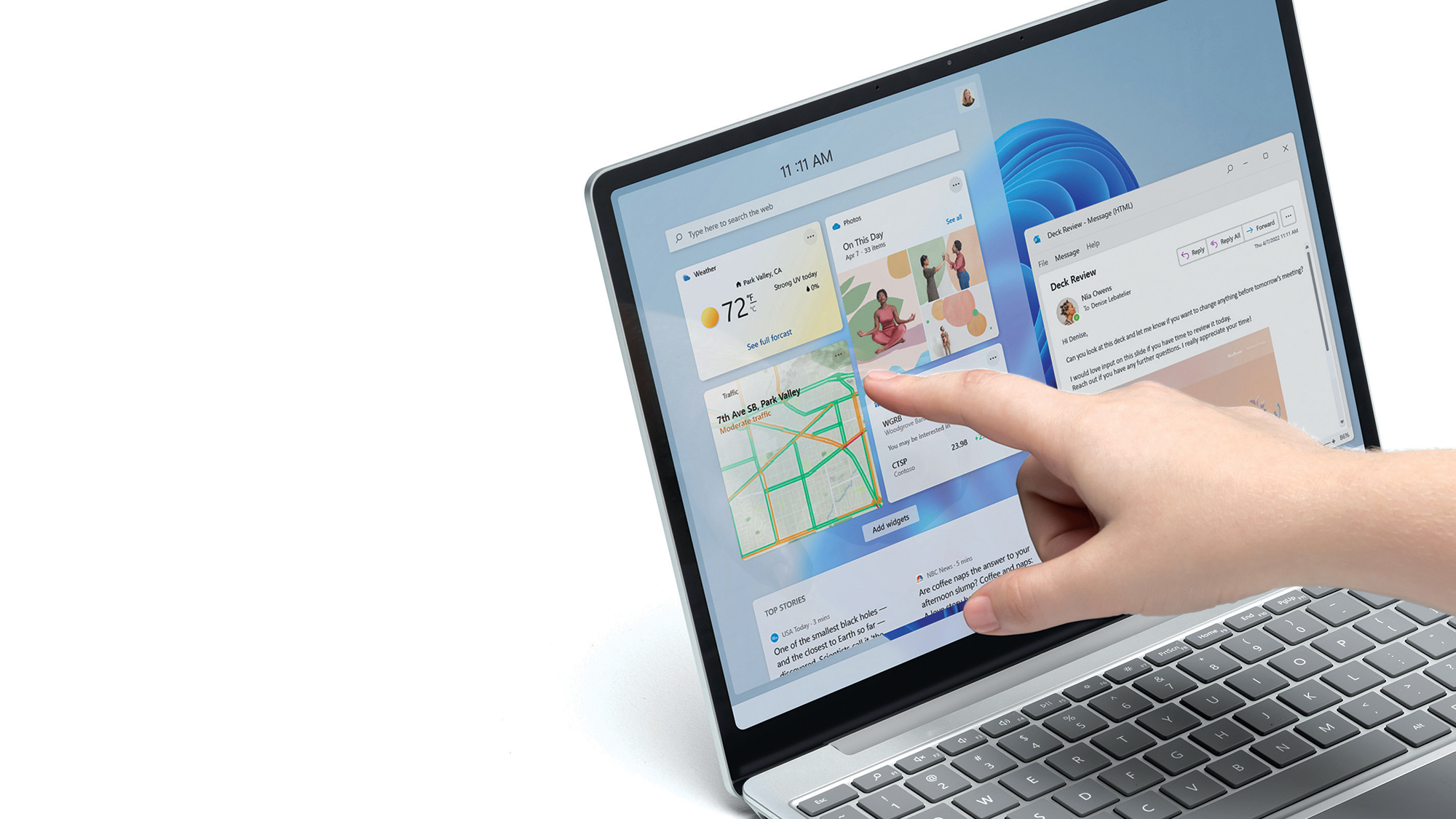Microsoft Surface Laptop Go 2 review: Basic but brilliant
A high-quality, compact laptop that’s well suited to life on the move – for undemanding needs


-
+
Exceptionally high build quality
-
+
Great value
-
+
Strong display
-
-
Middling performance and battery life

If you’re spending around £700 on a laptop, you have no right to expect the quality that runs through the Surface Laptop Go 2. From the aluminium lid to the rigid polycarbonate shell, from the 720p webcam to the twin far-field mics, from the keyboard to the touchpad, it exudes class like a Savile Row suit.
Here, though, there’s no tailoring of choices. If you can live with 4GB of RAM and a 128GB SSD, it’s a bargain at £529. A stiff £100 will double the RAM to 8GB. And if you want 256GB, you must spend £729. Those prices are with Windows 11 Home; if you need Pro you’ll need to pay an extra £80 for a “Surface Laptop Go 2 for Business”.
Microsoft sent us the version with 8GB of RAM and a 256GB SSD, and as with all models it’s based around a Core i5-1135G7 processor. That’s an 11th generation chip, which is much cheaper than the 12th gen Core i5-1235G7 in the Samsung Galaxy Book2 360.
Naturally, there’s a big hit when it comes to speed. The Go 2 scored 118 in the IT Pro benchmarks compared to 170 for the Book2. We saw a similar gulf in the multicore sections of Cinebench R23 and Geekbench 5: 4,121 versus 5,835, 4,388 versus 6,930. Only in PCMark 10 was the gap more reasonable, with the Surface a mere 10% slower than the Book2.
Those results lead to one conclusion: the Go 2 is built for comfort rather than speed. And there’s just enough battery life for a full day’s work, with 7hrs 50mins in our video test and 8hrs 18mins in office tasks. The Samsung lasted for almost 12 hours in both tests, by contrast, and you’ll get better results out of other Windows-powered laptops in terms of raw numbers.

You have two routes when it comes to charging the Go 2, with Microsoft’s proprietary Surface Connect port on the right – there’s a 250g charger in the box – and a single USB-C port on the left. It’s also the obvious route for display output, with no HDMI port: one USB-A port and a 3.5mm audio jack complete the lineup.
If Microsoft is stingy here, it makes up for it in the quality of the keyboard, which is ludicrously good for the price. There’s no backlight, but the keys have enough feel to make it a pleasure to use, and we had no trouble hitting high speeds thanks to the faultless layout.
Even the touchpad oozes quality, with a smooth glass finish; our one criticism is that it’s small at 100 x 67mm. Then again, you don’t need much swiping to navigate the 1,536 x 1,024 screen, which translates into 148ppi across the 12.4in diagonal.
The panel is tuned for the sRGB colour space, covering 93% with an accurate average Delta E of 0.84, and whites do indeed look white thanks to a 6405K native colour temperature.
Gaming comes courtesy of Intel’s Iris Xe graphics, with a return of 50fps in Metro: Last Light at High settings and the screen’s native resolution. But one of the drawbacks of the Go 2’s compact dimensions – a mere 278mm wide and 15.7mm thick – is that cooling isn’t a priority, which is why rates dropped to 43fps on the second and third run.

Streaming video is far less demanding and here the Surface excels, with a pair of surprisingly meaty and accomplished speakers. The 720p webcam is equally strong, with accurate colours - if not the greatest detail capture. The dual far-field microphones are the true stars, capturing our voice with clarity. What you don’t get is a second IR camera to support Windows Hello logins, with the only biometric security coming via a fingerprint reader built into the power button. Unless you buy the 4GB version, which doesn’t include even this.
Microsoft is keen to push this laptop’s other security features, making much of the fact that this is a “Secured-core PC”. The idea is that you have a protected “boot path” that will spot compromised firmware, but all big laptop makers offer something similar; you can decide for yourself by reading Microsoft’s documentation.
Microsoft also hopes to lure business customers with the promise of replaceable parts, but a one-year warranty and the fact that components such as memory are embedded on the board don’t really make this a selling point.
But, whether you’re buying for business, home use or a mix of both, it’s price and portability that appeal here. Despite that 4GB of RAM, the base configuration is still tempting, because it would be a brilliant secondary laptop. Even if you end up buying the 8GB version with a 256GB SSD, it’s a terrific little machine for the price.
Microsoft Surface Laptop Go 2 specifications
| Processor | 4-core 2.4GHz (4.2GHz boost) Intel Core i5-1135G7 processor |
| RAM | 8GB LPDDR4x RAM |
| Graphics adapter | Intel Iris Xe graphics |
| Storage | 256GB SSD |
| Screen size (in) | 12.4in |
| Screen resolution | 1,536 x 1,024 |
| Screen type | IPS display |
| Touchscreen | Yes |
| Memory card slot | N/A |
| 3.5mm audio jack | Yes |
| Graphics outputs | USB-C 3.2 Gen 1 |
| Other ports | USB-A 3.2 Gen 1, Surface Connect port |
| Web Cam | 720p webcam |
| Speakers | Row 13 - Cell 1 |
| Wi-Fi | Wi-Fi 6 |
| Bluetooth | Bluetooth 5.1 |
| Dimensions, mm (WDH) | 278 x 206 x 15.7mm |
| Weight (kg) - with keyboard where applicable | 1.1kg |
| Battery size (Wh) | 41Wh battery |
| Operating system | Windows 11 Home |
Get the ITPro daily newsletter
Sign up today and you will receive a free copy of our Future Focus 2025 report - the leading guidance on AI, cybersecurity and other IT challenges as per 700+ senior executives
Tim Danton is editor-in-chief of PC Pro, the UK's biggest selling IT monthly magazine. He specialises in reviews of laptops, desktop PCs and monitors, and is also author of a book called The Computers That Made Britain.
You can contact Tim directly at editor@pcpro.co.uk.
-
 ‘Phishing kits are a force multiplier': Cheap cyber crime kits can be bought on the dark web for less than $25 – and experts warn it’s lowering the barrier of entry for amateur hackers
‘Phishing kits are a force multiplier': Cheap cyber crime kits can be bought on the dark web for less than $25 – and experts warn it’s lowering the barrier of entry for amateur hackersNews Research from NordVPN shows phishing kits are now widely available on the dark web and via messaging apps like Telegram, and are often selling for less than $25.
By Emma Woollacott Published
-
 Redis unveils new tools for developers working on AI applications
Redis unveils new tools for developers working on AI applicationsNews Redis has announced new tools aimed at making it easier for AI developers to build applications and optimize large language model (LLM) outputs.
By Ross Kelly Published
-
 Google layoffs continue with "hundreds" cut from Chrome, Android, and Pixel teams
Google layoffs continue with "hundreds" cut from Chrome, Android, and Pixel teamsNews The tech giant's efficiency drive enters a third year with devices teams the latest target
By Bobby Hellard Published